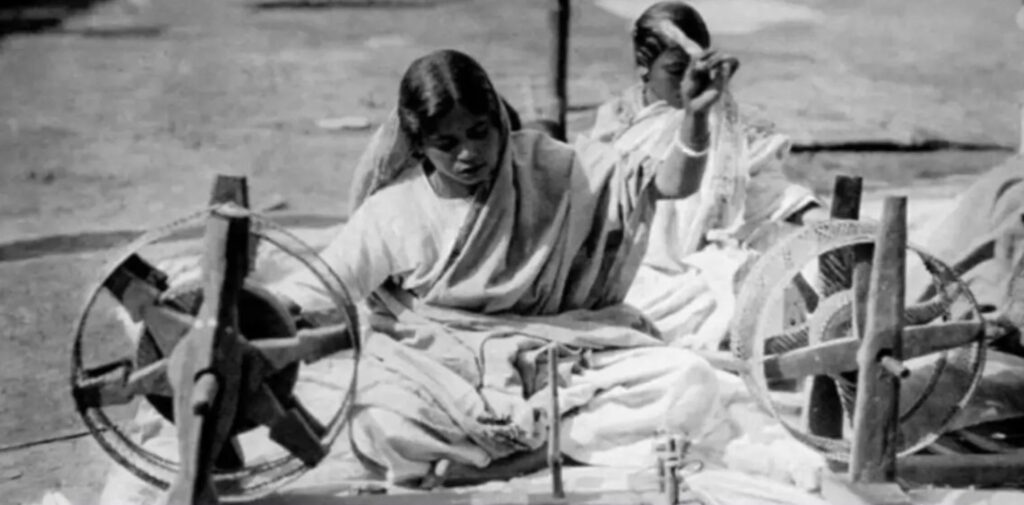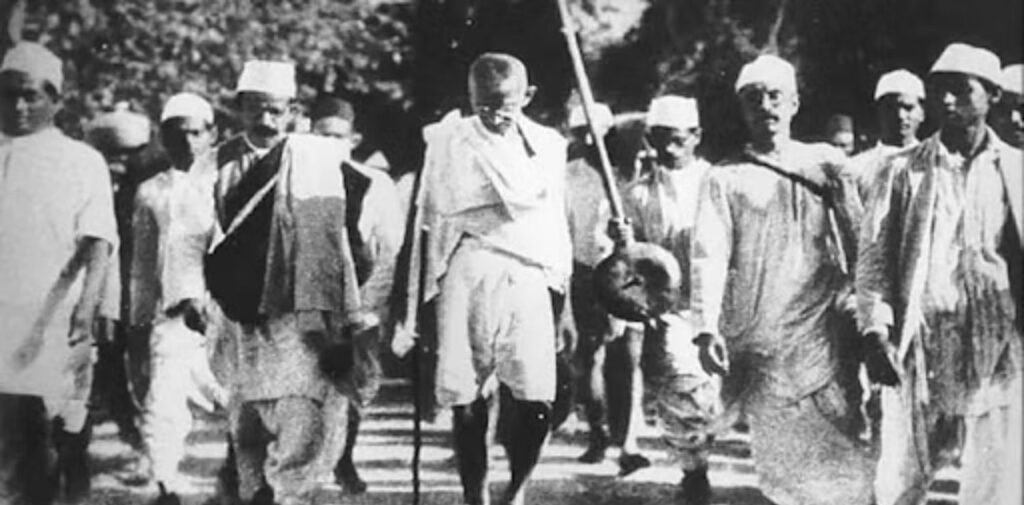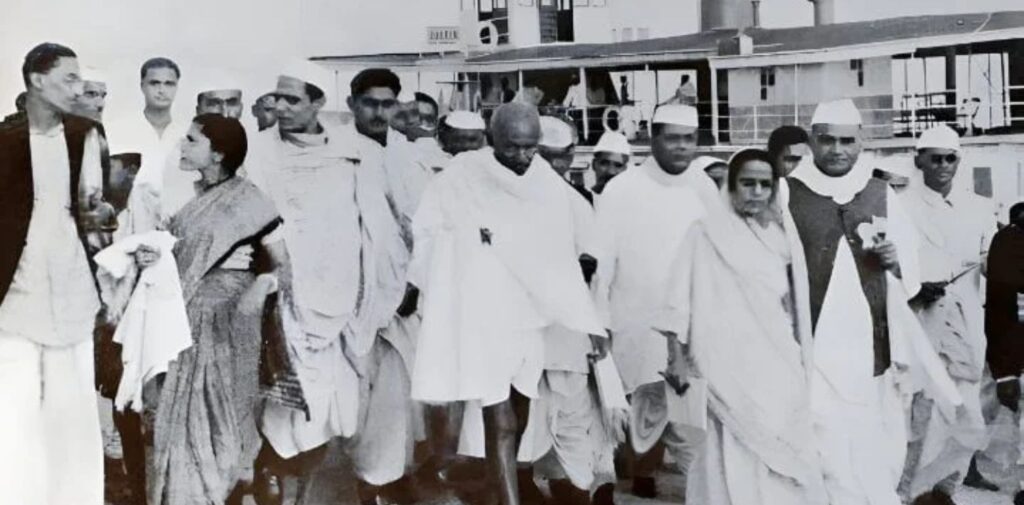The Swadeshi Movement was a crucial part of India’s fight for independence. It represented a powerful and strategic form of resistance against British colonial rule. The term “Swadeshi” translates to “of one’s own country,” and in the context of the movement, it referred to the promotion of Indian-made goods and the boycott of British products. This movement became a symbol of India’s quest for self-reliance, unity, and freedom.
In this article, we will explore how the Swadeshi Movement gained momentum, its impact on India’s struggle for independence, and the role it played in shaping India’s national consciousness. From its roots in the late 19th century to its pivotal role in the early 20th century, the Swadeshi Movement left a lasting mark on India’s journey toward self-rule.
Origins of the Swadeshi Movement
The roots of the Swadeshi Movement can be traced back to the discontent created by British policies that exploited India’s economy, industries, and resources. Under British colonial rule, India was turned into a market for British goods while its own industries were systematically destroyed or weakened. Traditional Indian handicrafts, textiles, and industries were overshadowed by British imports.
The direct trigger for the Swadeshi Movement was the partition of Bengal in 1905 by Lord Curzon, the then British Viceroy of India. The partition was seen as a deliberate attempt to divide the Bengali-speaking population along religious lines in order to weaken the nationalist movement. The people of Bengal, along with many Indians across the country, saw this as a political strategy to divide and rule.
In response to the partition, leaders like Surendranath Banerjee, Lala Lajpat Rai, and Bipin Chandra Pal called for a boycott of British goods and the promotion of indigenous products. The Swadeshi Movement soon gained widespread support, especially in Bengal, and became a significant part of the larger struggle for India’s independence.

The Rise of Swadeshi: Boycotting British Goods
The boycott of British goods was the central tenet of the Swadeshi Movement. The movement encouraged Indians to reject British products and instead support Indian-made goods. This strategy aimed to hurt British economic interests by reducing the demand for British goods in India, thereby weakening British control over the Indian economy.
One of the most important aspects of the movement was the emphasis on self-reliance. Indian leaders recognized that in order to be free from British control, India had to be economically independent. By promoting Swadeshi goods, the movement sought to foster a sense of national pride and self-sufficiency.
Key strategies of the Swadeshi Movement included:
- Boycotting British Textiles: One of the most visible symbols of the Swadeshi Movement was the boycott of British-made textiles. Indian markets were flooded with cheap British cloth, which led to the decline of the Indian textile industry. Indian nationalists, under the leadership of figures like Mahatma Gandhi and Bal Gangadhar Tilak, urged people to stop buying British textiles and instead wear khadi (handspun cloth) made by Indian weavers. This was seen as an act of defiance against British imperialism and a way to revive India’s ancient industries.
- Promotion of Indian Industries: Along with boycotting British goods, the movement sought to encourage the development of local industries. Indian entrepreneurs began to establish factories that produced goods like textiles, salt, and steel. By promoting these industries, the Swadeshi Movement aimed to make India economically self-sufficient.
- Swadeshi Mela (Fairs): To further promote the use of indigenous products, the Swadeshi Movement organized fairs known as “Swadeshi Melas.” These fairs were a platform for showcasing and selling Indian-made goods. They also became a gathering point for nationalists to discuss the future of India and strategize ways to continue resisting British rule.
- Protests and Civil Disobedience: The Swadeshi Movement also encouraged protests, strikes, and civil disobedience against British authority. These included rallies, picket lines, and public demonstrations that aimed to create awareness about the harm caused by British goods and policies. People were urged to refuse to pay taxes on British goods, creating economic pressure on the colonial government.

The Impact of Swadeshi on Indian Society
The Swadeshi Movement had a far-reaching impact on India’s social, political, and economic fabric. Its influence spread beyond Bengal and became a nationwide movement that united people from different regions, languages, and religions in a common cause.
- National Unity: The Swadeshi Movement helped foster a sense of unity among Indians. People from various communities came together to protest British rule and support indigenous goods. The movement transcended regional, linguistic, and religious divisions, as all sections of Indian society found a shared purpose in the fight for independence.
- Strengthening Indian Economy: One of the long-term impacts of the Swadeshi Movement was the revitalization of India’s handicraft and textile industries. By promoting local goods and boycotting foreign products, the movement gave a boost to traditional industries, helping them grow and flourish. The promotion of khadi became a symbol of self-reliance, which later played a key role in the freedom struggle.
- Cultural Revival: The movement also inspired a cultural revival in India. Nationalists encouraged people to embrace their traditional ways of life, from clothing and food to customs and practices. This cultural revival instilled a sense of pride in India’s heritage and helped break the colonial mindset that often saw Western culture as superior to Indian traditions.
- Emergence of New Leaders: The Swadeshi Movement saw the emergence of new leaders who would go on to play pivotal roles in the freedom struggle. Leaders like Subhas Chandra Bose, Bipin Chandra Pal, and Lala Lajpat Rai became popular figures during the movement. Their leadership and commitment to the cause of independence made them key contributors to the fight for freedom.
Challenges Faced by the Swadeshi Movement
Despite its widespread popularity, the Swadeshi Movement faced several challenges. One of the main obstacles was the repressive measures imposed by the British government. In response to the movement, the British authorities used force to suppress protests and imprison leaders. Many Swadeshi leaders were arrested, and their attempts to organize protests were met with violence and intimidation.
Additionally, there were internal challenges. The Swadeshi Movement, although initially united, began to face divisions between different factions within the nationalist camp. While the more radical elements of the movement, like Bal Gangadhar Tilak, called for direct action and civil disobedience, other leaders, like Gopal Krishna Gokhale, believed in a more moderate approach. These differences led to internal conflicts that weakened the effectiveness of the movement at times.
Another issue was the economic pressure faced by people. While the boycott of British goods was meant to hurt the British economy, it also had an impact on Indian consumers, who sometimes found it difficult to afford locally produced goods. In some cases, the reliance on handmade goods created challenges in terms of availability and quality.

The Role of the Swadeshi Movement in India’s Independence
Although the Swadeshi Movement was not able to immediately drive the British out of India, it played a significant role in the larger struggle for freedom. The movement laid the groundwork for future movements and helped create a spirit of resistance that would eventually lead to the end of British rule in 1947.
- Foundation for Future Movements: The Swadeshi Movement was a precursor to the more widespread protests and civil disobedience campaigns that would take place later. Leaders like Mahatma Gandhi, who later became the face of India’s independence movement, were influenced by the principles of Swadeshi, particularly the idea of non-violent resistance and self-reliance. Gandhi’s call for non-cooperation with the British government and the famous Salt March of 1930 drew inspiration from the earlier Swadeshi Movement.
- Economic Nationalism: The Swadeshi Movement helped create a sense of economic nationalism in India. By focusing on the importance of self-reliance and promoting local industries, the movement contributed to a broader vision of an independent, self-sustaining India. This vision of economic independence became a cornerstone of India’s post-independence development policies.
- Symbol of Unity and Resistance: The Swadeshi Movement demonstrated that resistance to British rule could take many forms, from boycotting foreign goods to promoting Indian-made products. It united Indians from all walks of life and showed that even small, everyday actions could contribute to the larger goal of independence.
Conclusion
The Swadeshi Movement was a defining moment in India’s struggle for independence. It was a powerful demonstration of how the boycott of British goods, the promotion of indigenous products, and the fostering of national pride could challenge colonial rule. Though it faced many challenges, including repression and internal divisions, the movement laid the foundation for future resistance efforts and played a critical role in shaping India’s national consciousness.
Today, the Swadeshi Movement serves as a reminder of the importance of self-reliance, unity, and economic independence. It is also a symbol of how ordinary citizens, through collective action, can bring about significant change. The spirit of Swadeshi continues to inspire movements for local goods, sustainability, and national pride, making it a vital part of India’s rich history in the fight for freedom.




